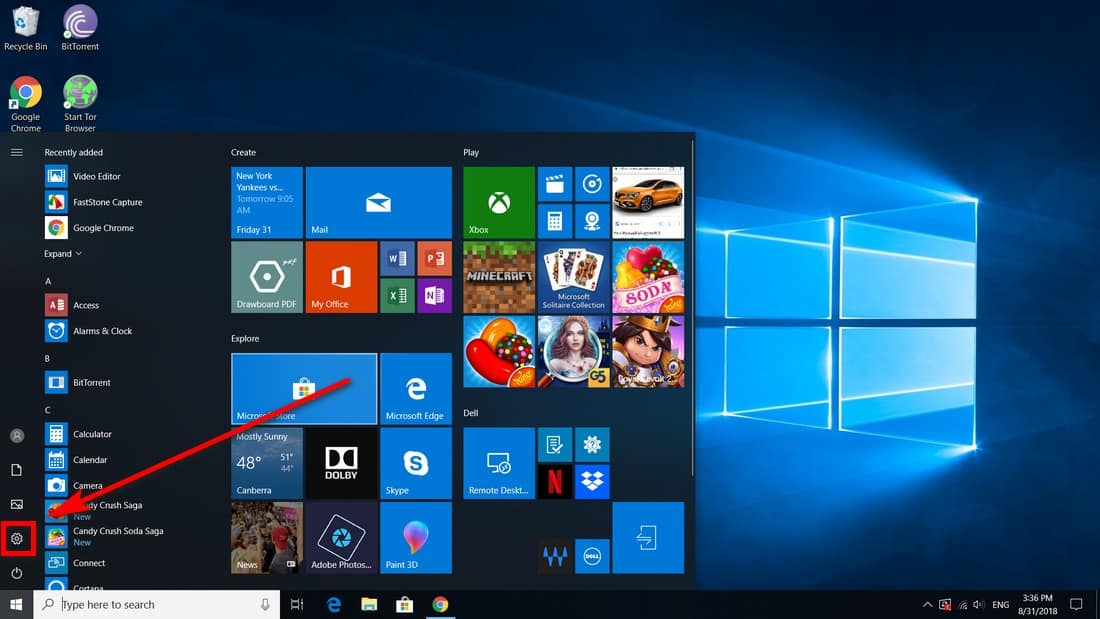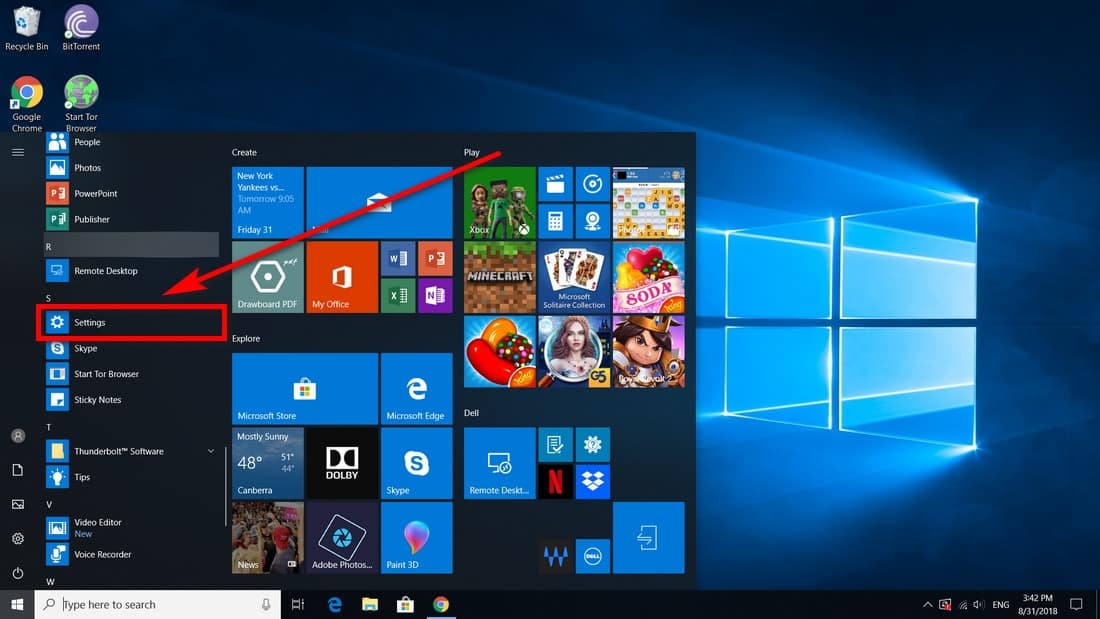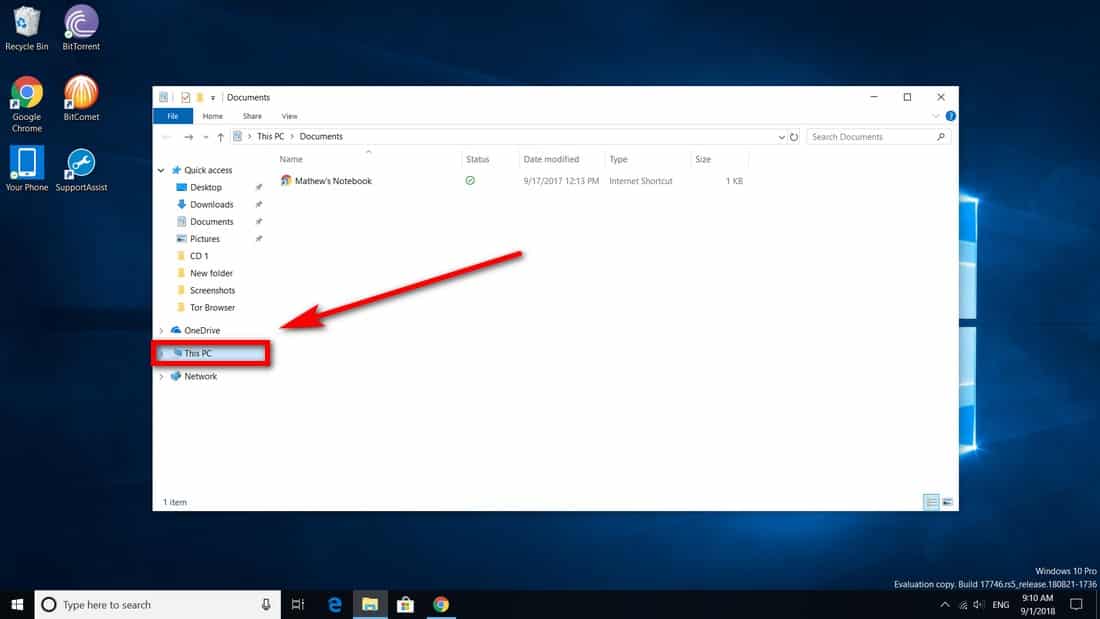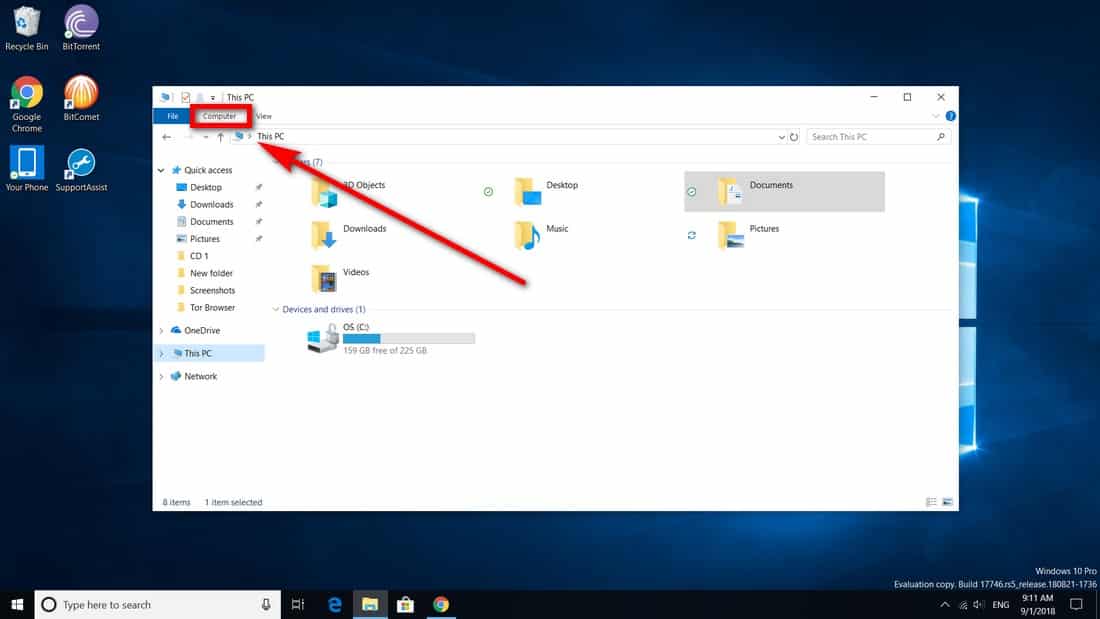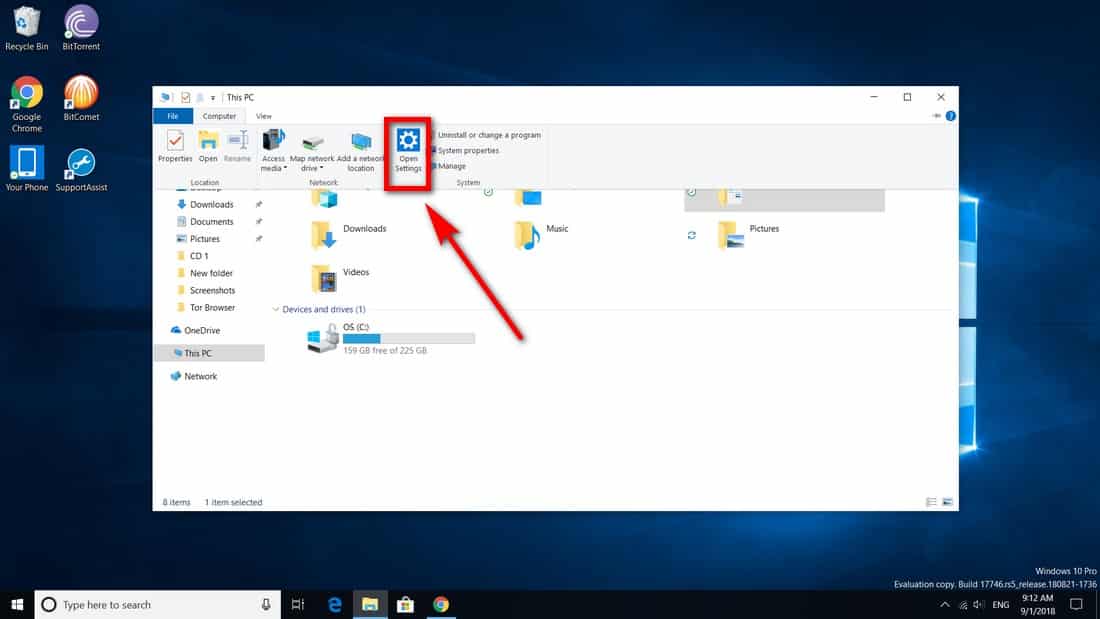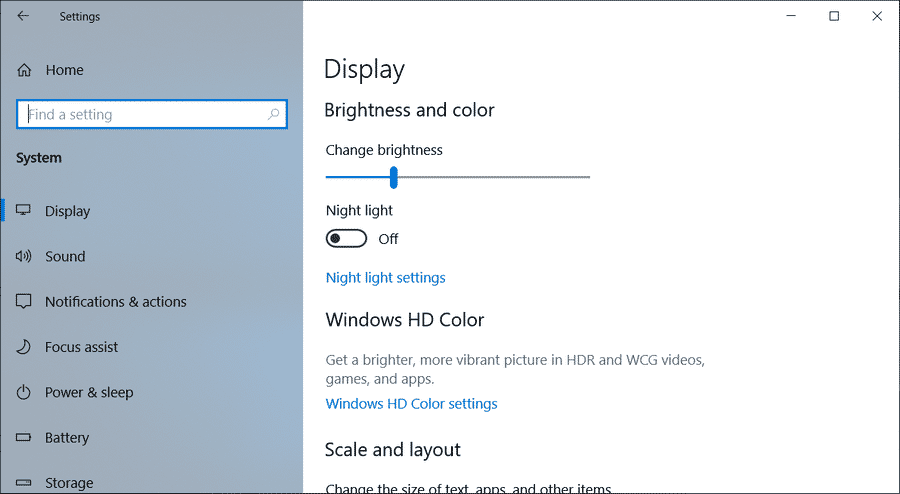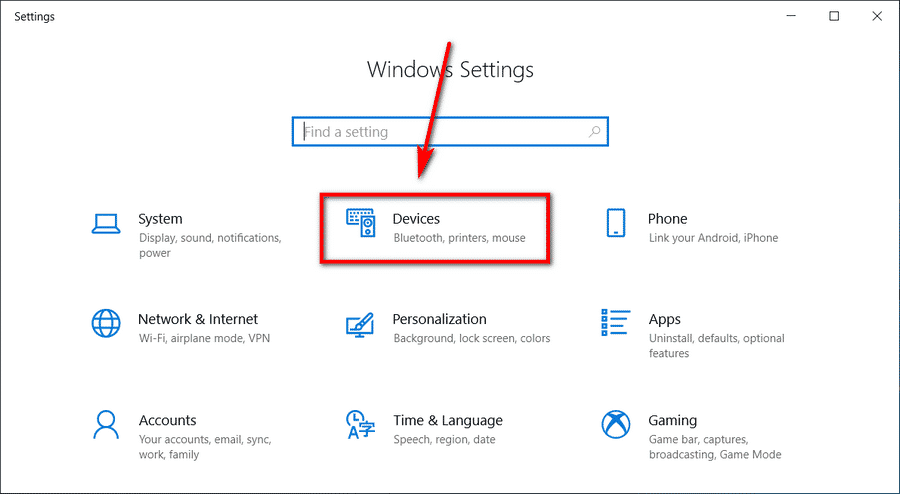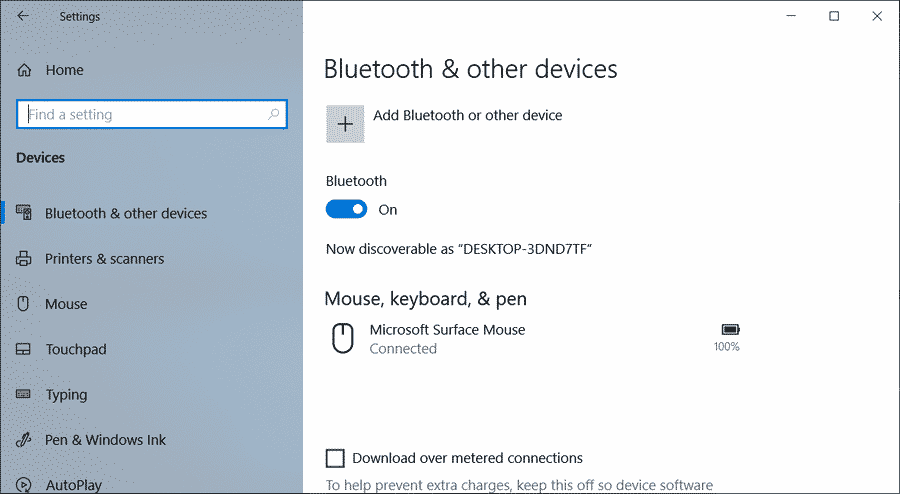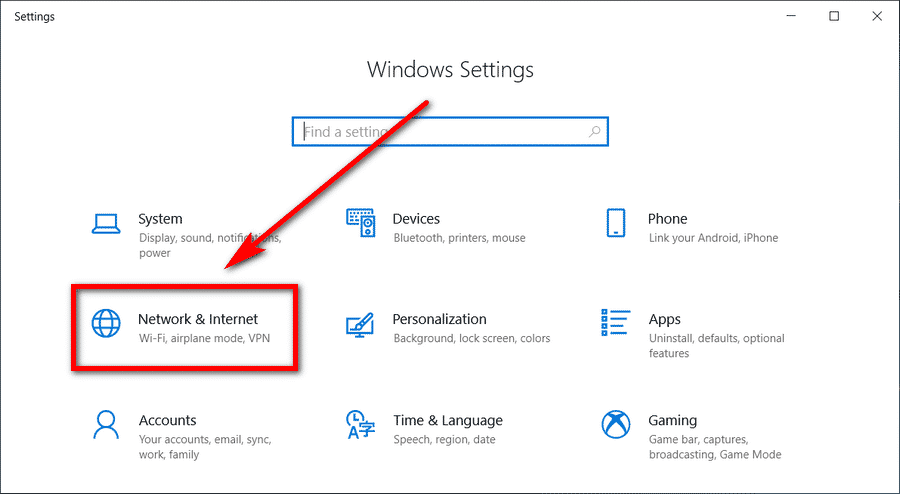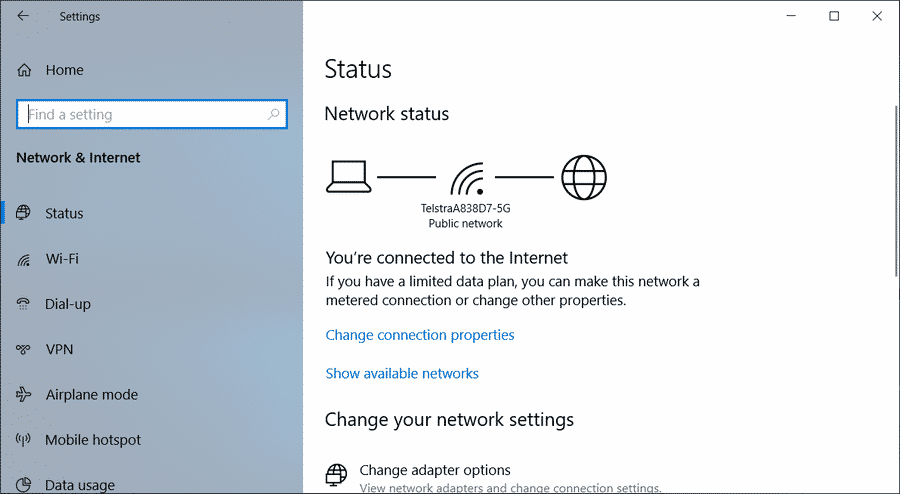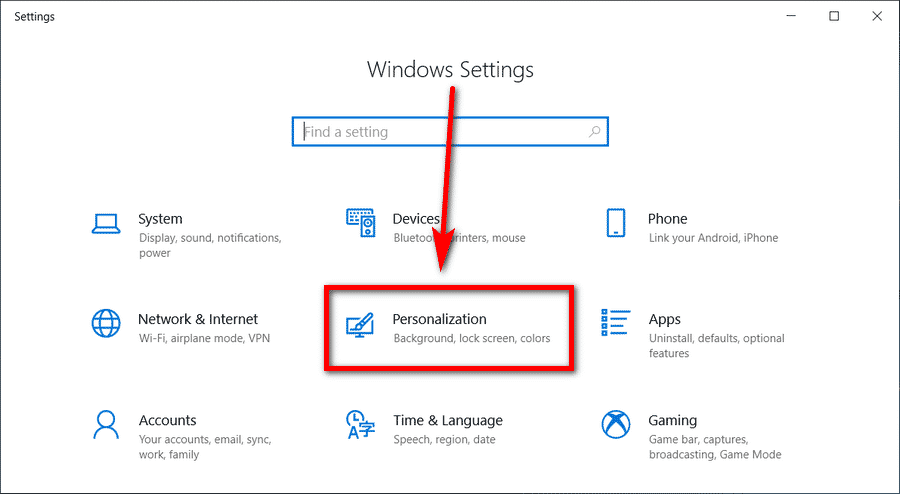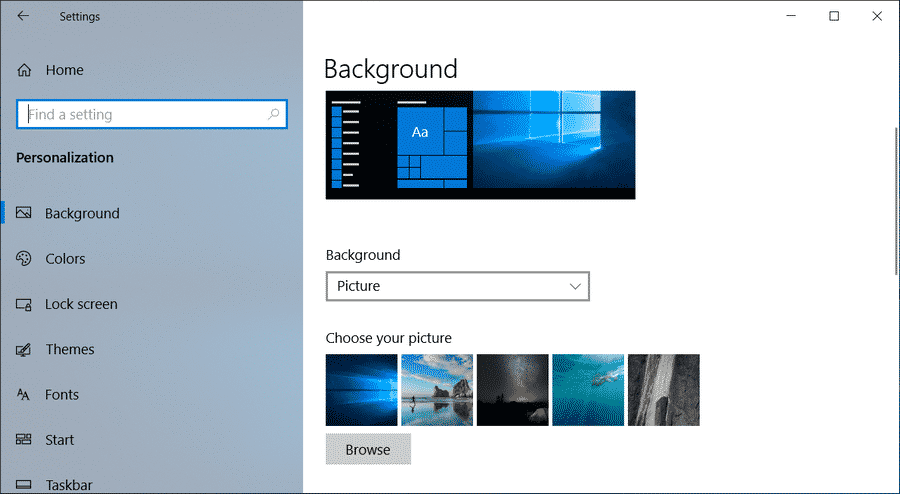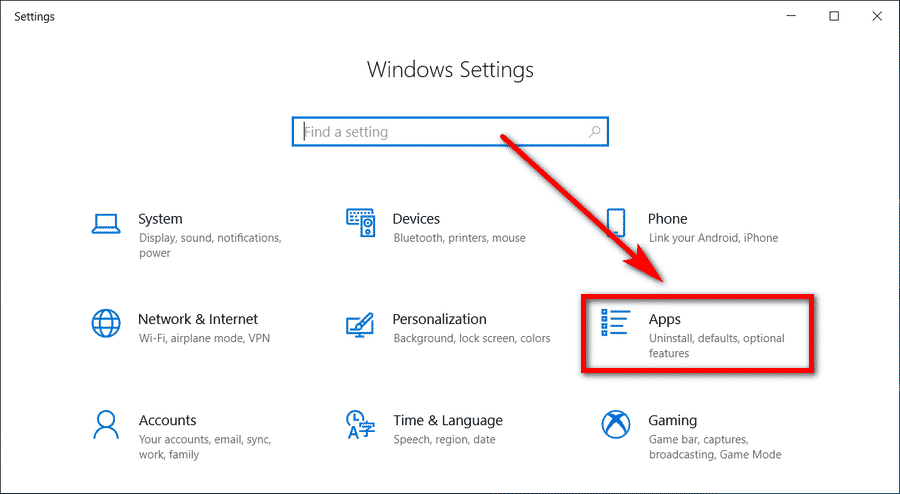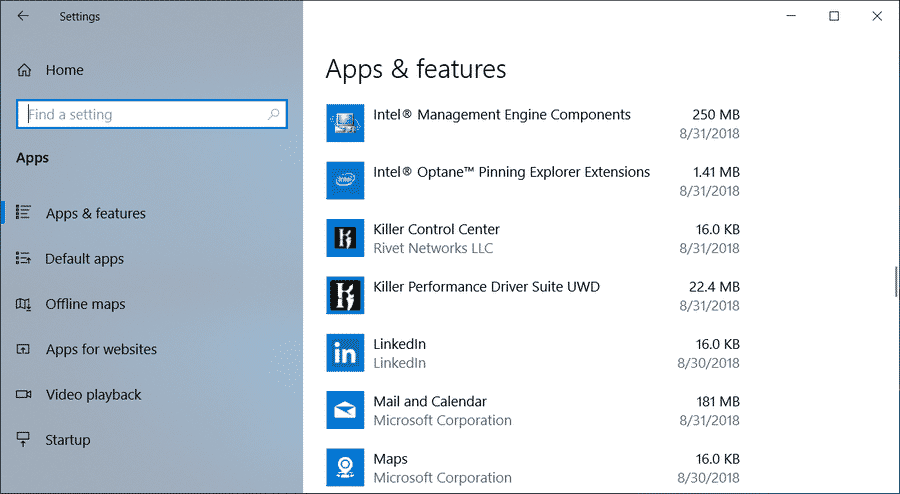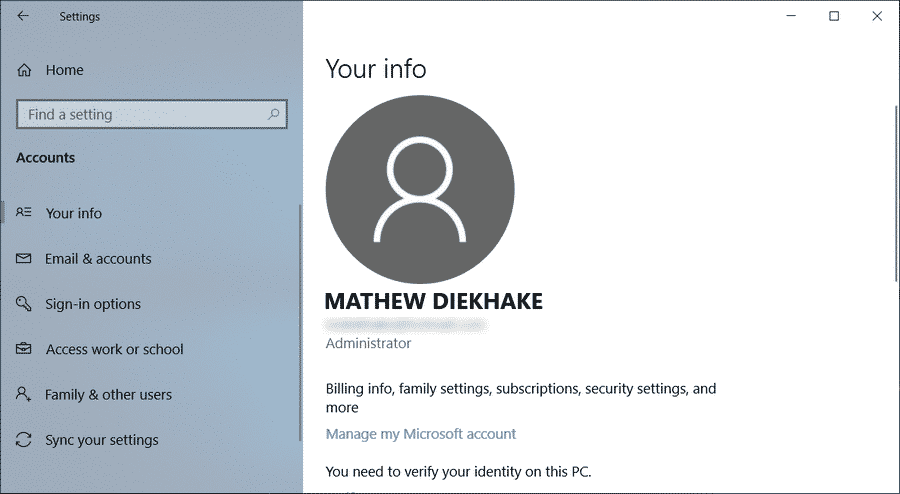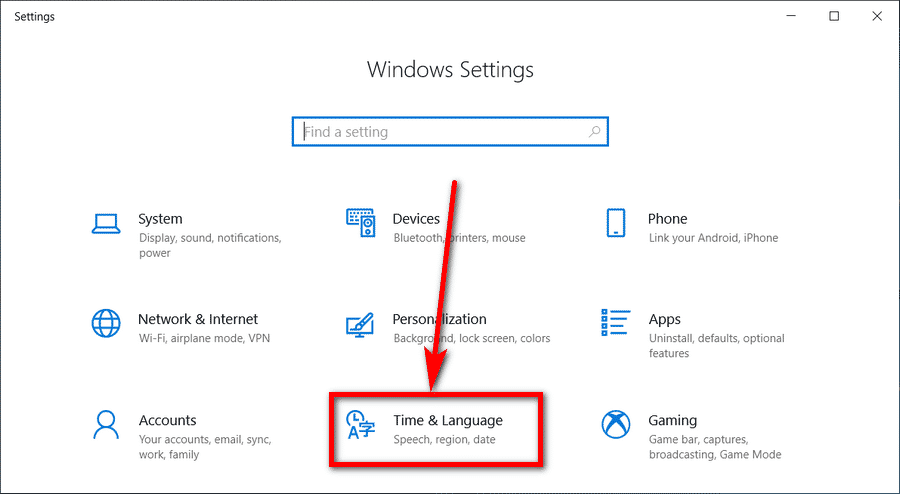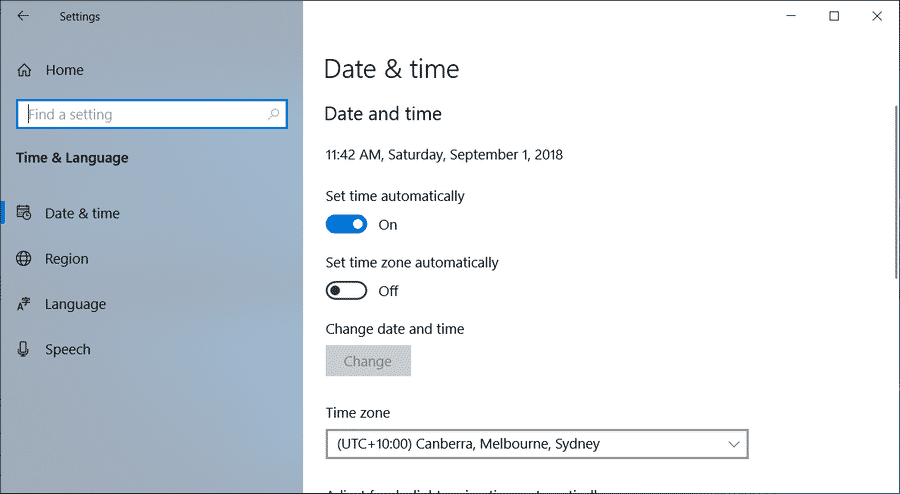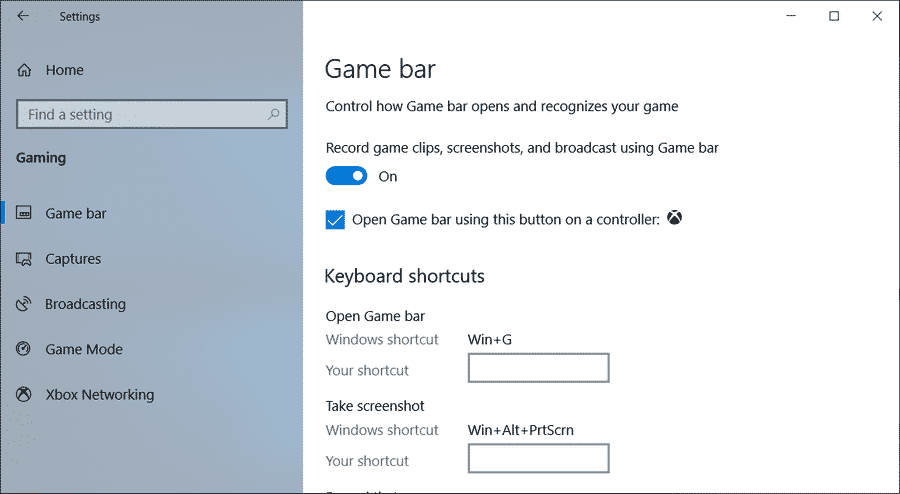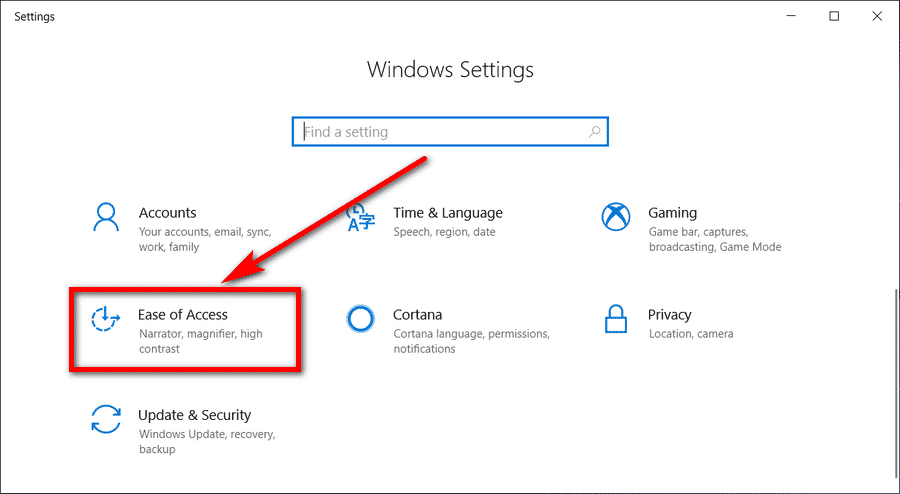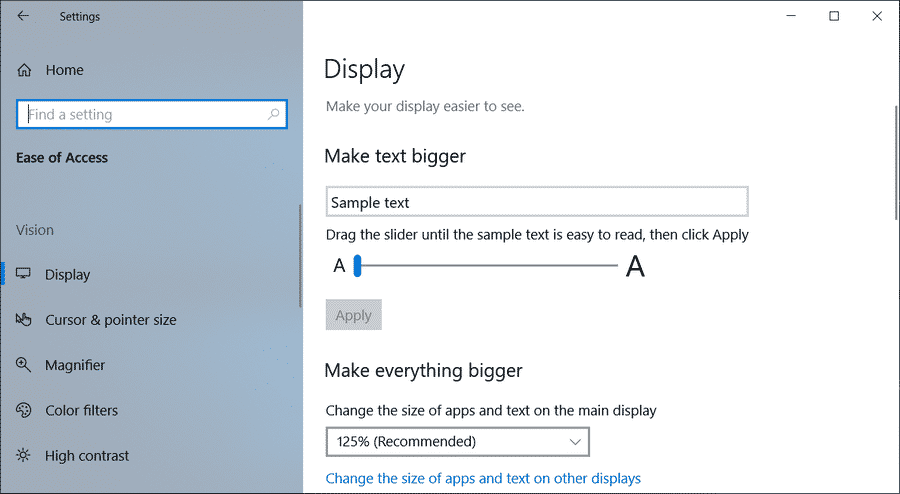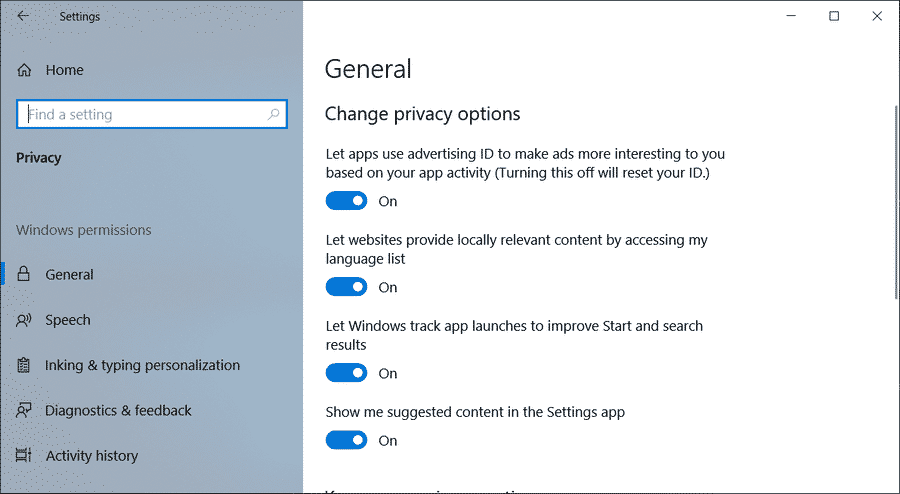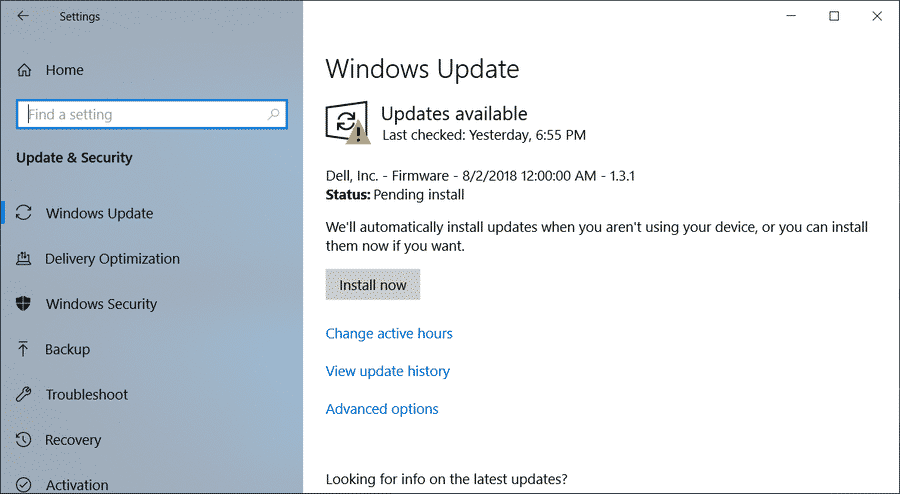Last Updated on December 26, 2022 by Mathew Diekhake
The first settings menu to break away from the settings coming from the Control Panel began in Windows 8. The Windows developers have taken things considerably further again in the new Windows 10 where it appears as though they intended to phase out the older Control Panel and eventually replace it all with the new Windows Settings menu.
When the Windows Settings menu available in Windows 10 first came out, it received a lot of criticism from some of the largest tech sites in the world. The issue they had was that having two places in the one operating system for people to do something was adding to the confusion and “creating a mess.”
Here at ConsumingTech, we aren’t so critical. If we were to take a guess, we’d say that it appears as though Microsoft wants to move away from the Control Panel, but they want to do it gradually for obvious reasons. The first reason being that the idea that has created to replace the older Control Panel might not be very good, so they are likely assessing what people’s usage of the new Windows Settings is like. Another reason is that there are going to be many individuals who enjoyed the older Control Panel and had gotten to know the older Control Panel quite well, and it is going to take some time to get those people to start enjoying the new Windows Settings—and more importantly start using the new Windows Settings. And finally, Microsoft is no stranger to making changes to the way the operating system appears and functions, and there is nothing wrong with that. However, they obviously would hope to limit the number of times they change things. Thus, making sure they do things right this time is paramount. If they aren’t creating something that is working better than what they had before, then it would be a huge mistake to replace what they had before. Keeping the Control Panel still there, for now, allows them to go back to it if they choose.
There is one more thing about the old Control Panel still featuring in Windows 10: some of the old settings are still in the old Control Panel user interface and not yet available from the Settings application. There are also a few features that start off by using the Settings app and then direct you through to the older Control Panel to complete the task. Those are the kinds of details that will need to be fixed soon if Windows 10 is going to be completely mess-free.
With all that being understood, in my opinion, the new Windows Settings menu available in Windows 10 is far better than the Control Panel. It is simply put, easier to use than the Control Panel and it’s as close to delightful as a visit to a settings menu ever will be. There will likely continue to be changes made to the Windows Settings menu (we have already seen some big changes made to it in the Creators Update), but all in all, our guess would be that the new Windows Settings menu is here to stay and will eventually replace the Control Panel as it is continued to be phased out over the new few years.
If you agree with us, then you’ll understand the reason for wanting to get to know the new Windows 10 Settings menu on a deeper level so you can become an expert at navigating the Windows Settings. There are many similarities to the Control Panel’s architecture and the Windows Settings menu. If you were to open up the Control Panel and the choose to view the icon by categories, the way you navigate the Control Panel isn’t too dissimilar to the way you now navigate to the Windows Settings. The main noticeable difference is that the Windows Settings menu is larger, easier to see and laid out in a more friendly manner.
Note: Windows developers have commented that the reason they implemented the new Settings app is so they can have single universal settings experience across all Windows devices, including all types of mobile devices, tablets, laptops, and PCs. The last time they tried something like this (the Windows 8 operating system as a whole) things didn’t go so well. And we all know how that ended: they ended up doing away with the Windows 8 user interface and going back to their roots with the Start menu. So you can’t rule out the chance that this Settings app experiment is eventually reversed also.
Here’s what you need to open the Settings application, in every opportunity that Microsoft gives its users, when you’re using any of the versions of the Windows 10 operating system.
How to Open Settings Menu in Windows 10
The most common way for you to open up the Settings app is by clicking on the Start button > Settings gear icon from the left side pane.
If you prefer using the files from the Start menu, it is possible to create a new tile for the Settings app and then use the Settings as a tile. That allows you to do away with the Settings gear icon from the left side pane of the Start menu. To do that, open the Start menu and the scroll down the apps list until you get to the “Settings” app and then right-click on it and choose “Pin to Start.”
The Settings app will then appear on the Start menu where there is a space available for it. You can then click and drag the tile once it appears and have it in the location of your choice. I have clicked and dragged my Settings tile so that it is next to my Windows Mail tile. (I had to find it much further down the page.)
There’s also another way you can get access to the Settings app through File Explorer. Just head to the Start > Computer tab and then click on the “Open Settings” button that is available. The File Explorer and the Settings app are the two most important things available from the Start menu’s left side pane by default, and having the chance to get access to the Settings from File Explorer directly offers you a way to get there without having to open the Start menu again.
No matter what way you have chosen to get to the Windows Settings app, you all are presented with the same menu that is shown below. Under the “Windows Settings” heading at the top of the page is a search field that says “Find a setting” in it. You can use this search box if you know what you are searching for and want to head there a bit quicker than having to navigate through the menu buttons. The search box at the top of the menu is also useful if you can’t find what you wanted to find by trying to get there by navigating through the buttons and links.
Those preferring to follow the menu navigation can guess what button is the one they want to press by having a quick look at the description of the buttons that is below the name. For example, the first button on the Settings app menu is the “System button, and the description for it says “Display, notifications, and power” so I know to enter here by clicking on the “System” button if I want to head toward anything to do with the display.
The Windows 10 Settings app isn’t perfect in that regards because it doesn’t list all of the settings that can be found inside any button in its description. So it takes some getting used to before you know how to navigate your way around. It also doesn’t help when Microsoft changes things, and they have done so just between Windows 10 updates already. For example, the Creators Update has taken away the apps and programs from the “System” button and put it in another button called “Apps” to help address what I mentioned a minute ago about these descriptions not being able to fit in everything. You can’t fault Microsoft for wanting to fix an issue, but it would have been nice if they got it right in the first place. Now people have to learn not to enter the “System” button from the menu anymore when they want to remove an application.
After clicking on the “System” link from the menu, you’ll notice the option to check out everything to do with the display first in the left side pane. You can change the brightness level from here. (The user interface inside the display section has changed quite a bit since before the Creators Update. You always had the chance to modify the brightness level by using a bar similar to how it shows now post Creators Update, but the brightness bar was further down the page. Microsoft has also chosen to remove the large picture of the display which was taking too much attention away from what else was on offer and making it harder than necessary to navigate. The user interface of the display section is definitely better after the Creators Update.)
In addition to the display settings, you also get the chance to check out the notification and actions, power and sleep settings, the battery settings, storage settings, the tablet mode settings, multitasking, projecting to the computer, shared experiences and the about links from the left side pane.
Note: The screenshot below is taken post Creators Update.
Click on the “Devices’ link from the Settings app menu when you want to get access to anything to do with the Bluetooth, printers, and mouse.
Inside the “Devices” section you get the chance to turn Bluetooth on or off, connect other devices like the Surface Book to USB 3.0 and connect other devices like the Surface pen that comes with the Surface Book and Surface Pro (plus the Surface laptop now), and use the Surface integration service. It’s also in here where you find the printers and scanners that you have connected to the computer. If you want to change the default printer in Windows 10, you still need to do that from the Control Panel. You can click also click on the “Mouse” from the left pane and choose how many lines the mouse scrolls each time, toggle the switch for scrolling inactive windows when hovered, choose to set the primary mouse button (between it being the left or right) and choose how many lines are scrolled when you scroll the mouse. The “Touchpad” link in the left pane gives you the chance to enable and disable the touchpad, choose to have the touchpad on or off when the mouse is connected, change the speed of the cursor (faster or slower depending on your preference), choose the sensitivity of the touchpad, as well as choose what functions that touchpad has on offer, such as the option to choose a two finger tap to right-click.) The “Typing” from the left pane lets you choose if you want Windows to autocorrect misspelled words for you or not, choose if you want Windows to highlight misspelled words for you if you want, toggle show text suggestions and adding a space after the suggestions on or off, the chance to add a period after double-tapping the spacebar and get access to many toggles for the touch keyboard. There’s also some features for the Surface pen and Windows Ink Workspace. Plus the chance to choose to have Autoplay on or off for autoplaying all media and devices. The “USB” at the bottom lets you get notifications for any issues with USB drivers connecting, and the chance to turn off the option for stopping the device when the screen turns off which is useful if you have trouble connecting devices.
Click on the “Network and Internet” link from the Settings app if you want to get access to anything to do with the WiFi, airplane mode and VPN (virtual private network.)
The first option is the “Status” from the left pane, and it is one of the most important places in the Windows Settings for many people because it’s the status of the WiFi connection. If your WiFi is not working, you’ll know it by looking here. You can also choose to swap networks here by clicking on the “Show available networks” link. If you do have problems and don’t know how to fix them, then you can scroll down the page to find the “Network troubleshooter.” The “WiFi” link in the left pane is also important for your network connection because it offers a toggle for turning on or off the WiFi. You can also choose to connect to the WiFi automatically or not from here, plus an interesting feature that might be worthwhile in the near future: the chance to “Find paid plans for suggested open hotspots near me.” Windows 10 also offers an opportunity to set up a dial-up connection instead of WiFi. You’ll find all of that available from the “Dial-up” link in the left pane. There’s also a “VPN” link in the left pane if you want your Windows 10 operating system to connect to a virtual private network. A VPN stops people from being able to trace where you are when you do things like browse websites. (The VPN is not going to hide you from the federal police or anything of that nature, but it does stop the average website from being able to track you personally and is useful if you want to browse the web anonymously.)
Click on the “Personalization” button to get access to the background, lock screen and color settings.
The “Background” link in the left pane is one of the more popular options available within the Windows Settings app. It was never easy to know how to do something like change the background or wallpaper in Windows unless someone had taught you how to right-click on the desktop. Microsoft has kept the chance for you to right-click on the desktop to get access to the background and wallpaper settings, but you can also get there by navigating to the Windows Settings from the Start menu. It’s here where you can browse the pictures on the computer for a new background, enable the desktop background slideshow, or just pick a solid color instead. The “Colors” link in the left pane now lets you choose a color of the operating system no matter what picture you choose to show as the desktop background. (Earlier versions of Windows 10 before the Creators Update would choose the color automatically for you based on the tones in the background picture you were displaying.) The “Lock Screen” link in the left pane lets you choose the lock screen background by having the Windows Spotlight feature running, or just a picture or slideshow of your choice. There’s also the chance to choose a theme instead of just customizing your desktop wallpaper and colors by yourself. To do that, just click on the “Themes” link in the left pane. The theme is similar to what used to happen before the Creators Update where Windows applies a color of its choice based on the background picture. Most people don’t enjoy this very much, hence why the swapped it for giving people the chance to choose their own colors.
Click on the “Apps” link from the Settings app to get access to the area for uninstalling, the default apps, and optional features.
The “Apps” section is new since the Creators Update. Most of the things available from in here were originally available in the “System” section. But since they weren’t really easy to find from the Settings app main menu because most people didn’t relate apps to do with the system, it appears as though Microsoft has decided to then give them their own section so people can navigate to it more easily. In the “Apps and features” link in the left pane is where you can find all of the applications that are installed on the computer at the moment. Click on each one of them to find the same drop-down menu that has always been there for uninstalling them. The “Default apps” link in the left pane lets you choose what the default application on Windows 10 will be when you use the operating system. For example, you can click on the current web browser that is on display and then choose to change the default browser to another browser.
Click on the “Accounts” link from the Settings app to get access to everything to do with your accounts and the accounts that are associated with the computer you are using, the email, syncing, work and family related settings.
Inside the “Accounts” section is where you can swap between signing into your Microsoft account and signing into your local user account. You can also get access to this area to delete a user account in Windows 10. There’s also the “Sign-in options” that you can configure your sign-in settings, the Windows Hello facial recognition feature and fingerprint sensor for singing in if you have compatible devices, a toggle for choosing whether you want to dismiss the lock screen automatically, and the chance to change your account password. There’s also an option for you to “Improve recognition” in Windows Hello which is another way of saying take another look at your face so that it hopefully works better the next time if you were having problems with it recognizing your face in the past.
Click on the “Time and language” link from the Settings app to get access to the speech, region, and dates.
From the “Date and time” link in the left pane, you can choose what time zone your computer uses so the time on display in the system tray (bottom right corner of the taskbar) is showing the right time that you want to see. That might not always be the time that is in the area you are currently in now if you are about to travel for example. But there is also a chance to allow the Windows 10 operating system to know your location and then it will automatically adjust these times for you.
Click on the “Gaming” icon from the Settings app to find everything to do with the Game bar, DVR, broadcasting and Game mode.
The “Gaming” link from the Settings app is one of the two new features that came in the Creators Update for Windows 10. It’s in here where you can find all of the settings to do with your Game bar. The Game bar lets you record gaming clips, take screenshots of games, and even broadcasting your gaming experiences. These options are making the Xbox (also owned by Microsoft by the way) look like an excellent purchase. However, you don’t have to have any of these features turned on if you don’t want them. It’s also here where you find the “Game Mode” link in the left pane. The Game mode is a new feature brought in by Microsoft in the Creators Update that focuses on trying to create a better gaming experience when users are playing games on the PC. It does this by intelligently understating when a game is being played and focusing the computer’s resources on the game more than it did before. Gaming is a popular past time for many kids, and games are typically pretty cool to play on a computer. However, one of the downsides with gaming on PC is that it requires an expensive computer to handle the demands of modern-day gaming and most people simply don’t have a computer good enough to handle the most popular games out there that people play on Xbox One. This new Game Mode helps change that a little bit.
Click on the “Ease of Access” button to get access to the narrator, magnifier, and high contrast.
You might have noticed that as the list goes further down, the importance of the features tends to die off. That is definitely true. Hardly anybody is going to enter the “Ease of access” area, and most people couldn’t care less about the narrator (which is also available from the lock screen mind you.) The narrator is a screen reader that can read all of the text that is being displayed on the screen. The narrator feature is typically used by people who have trouble with sight and not many others. You don’t use the narrator just because you can’t be bothered reading. That would be abnormal.
Click on the “Privacy” link in the Settings app to get access to the location and camera settings.
Most people love as much privacy as they can get which is why they don’t like the idea of cookies and web beacons very much—even though they do not mean a person is sitting at a top secret facility checking out on the words you search for in Google or around the web. It’s all obviously done by computer. You don’t get to control web beacons and cookies in here, but you can choose to enable or disable the location service so Windows and apps know the location of the computer and can work around that accordingly. You can also enter the “Microphone’ area from the left pane and then choose to enable or disable the microphone from being used by apps if you want. (You can’t disable the microphone on the computer entirely from here. For that, you need to enter the Registry Editor.)
Click on the “Update and security” link in the Settings app to get access to the Windows Update, recovery, and backup settings.
If you are a keen user of the Windows operating system, then you’ll enjoy this new area that Windows 10 has made available where you can check out the Windows Update feature. With it, you can check for updates and install updates that are waiting for you. These updates will eventually be installed automatically, but Windows doesn’t check for updated all that often which is why you can sometimes find updated available that are ready to be installed but just haven’t been yet. It’s also in this area where you can choose to become a “Windows Insider” by clicking on the “Windows Insider Program” link in the left pane. The Insider program allows people to receive future versions of Windows before they are being rolled out to the public who are not signed up to be an Insider. The idea of the program is to be able to create more stable versions of Windows to be released to the public because finding all bugs by themselves is tough. But Windows fans love getting these updates, so they can try new features faster than they originally would have been able to if they weren’t signed up. You might be interested in doing the same.
As you can see, there is a lot to get to know with the Settings app in Windows 10, and it takes a while to get used to it. In a few months of using it a little bit every day, you’ll soon be able to find what you were hoping to find without so much as a second thought. And if you do need to think about it, then it might be something that Microsoft changes in the future anyway since they have made it clear they want to make the Windows operating system as user-friendly as possible for the average consumer. After all, that is what Microsoft was always about anyway. They just didn’t manage to pull it off as well as they’d hoped in earlier versions of the operating system.
You might also be interested in:
- How to Open Control Panel in Windows 10
- How to Remove Old User Account Pictures in Windows 10
- How to Change Visual Effects Settings in Windows 10
- How to Turn On/Off Suggested Content from Settings app in Windows 10
- How to Choose What Control Panel Applets Get Shown in Windows 10
- What is Windows Registry Editor and How Do I Use It?
- How to Enable or Disable Tabs (Sets) in Windows 10
- How to Reset Folder View for All Folders in Windows 10
You can subscribe to our RSS, follow us on Twitter or like our Facebook page to keep on consuming more tech.

